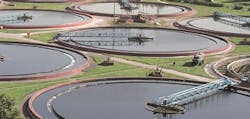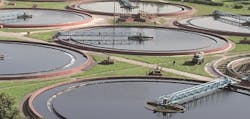Less than 40% of domestic wastewater treated in urban areas of India
With only 37% of domestic wastewater being treated this is becoming a major source of coliform contamination in rivers and groundwater in India, a government official has been quoted as saying.
Environment minister Prakash Javadekar was quoted by the Economic Times as saying total treatment capacity available covers 37% of sewage generation.
He referenced a report from the Central Pollution Control Board (CPCB) published in March 2015 and said “sewage generation from urban areas is estimated at around 62,000 million litres per day (MLD) whereas the total treatment capacity available is only 23,277 MLD”.
In its 2015 inventory of sewage treatment plants (STPs), CPCB reported that there are 816 STPs in 28 States/Union Territories of India.
Out of this total, 522 STPS are operational, 79 STPs are non-operational, 145 STPs are under construction and 70 STPs are proposed for construction.
Partially or untreated sewage is the single major source for deterioration of surface or groundwater quality. It contributes 70% of the pollution load to streams or water bodies of India.
In the report foreword, Shashi Shekhar, chairman of the CPCB, said: “It is necessary to make mandatory to setup STPs by the municipal authorities for bridging the treatment gap and enforcement of consent management.”
###
Read more
India desalination plant to receive high-capacity UF technology

